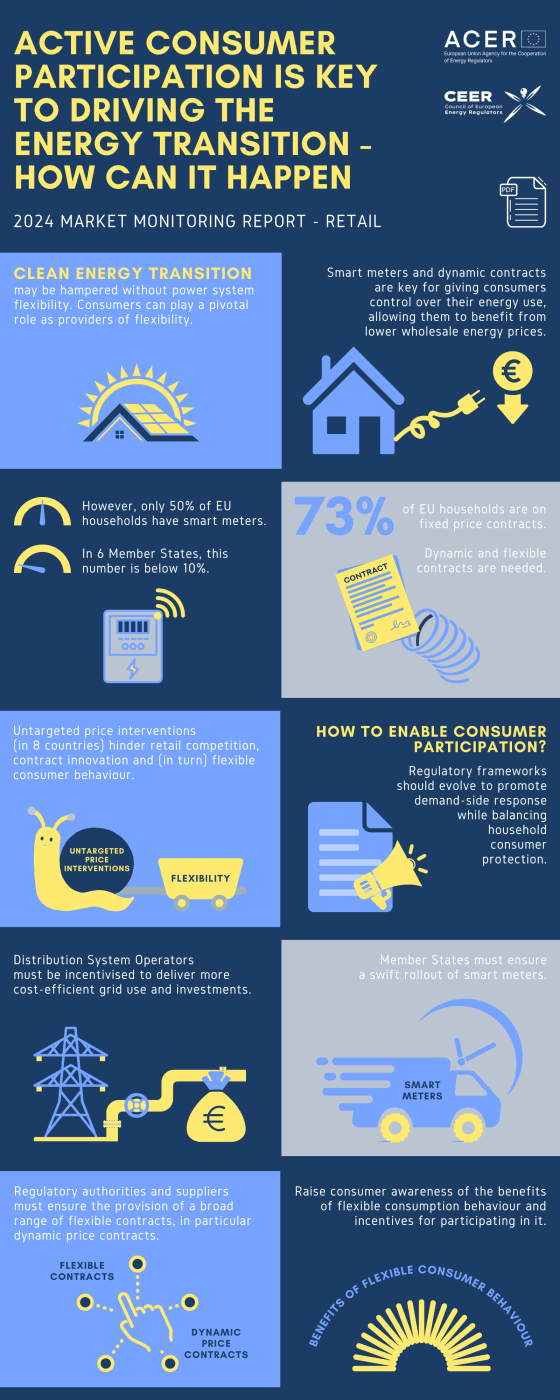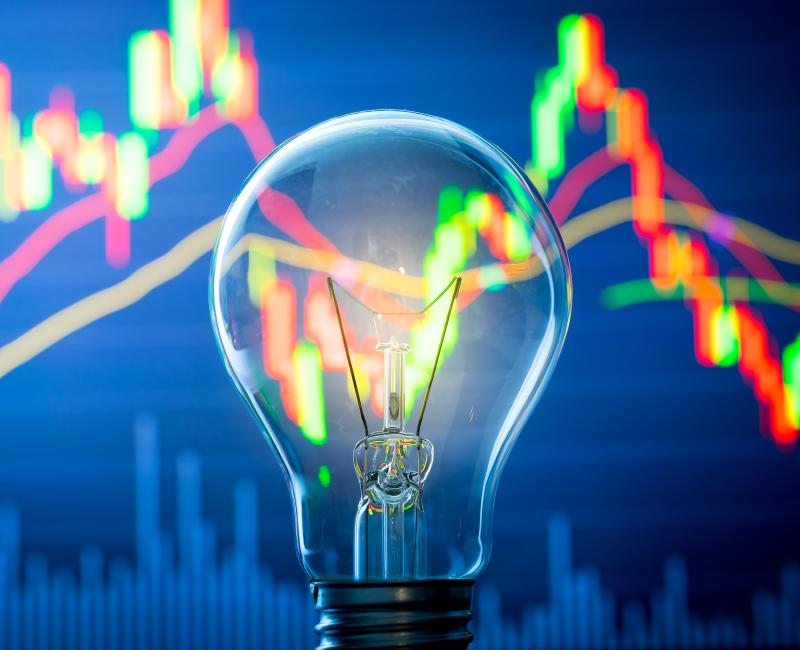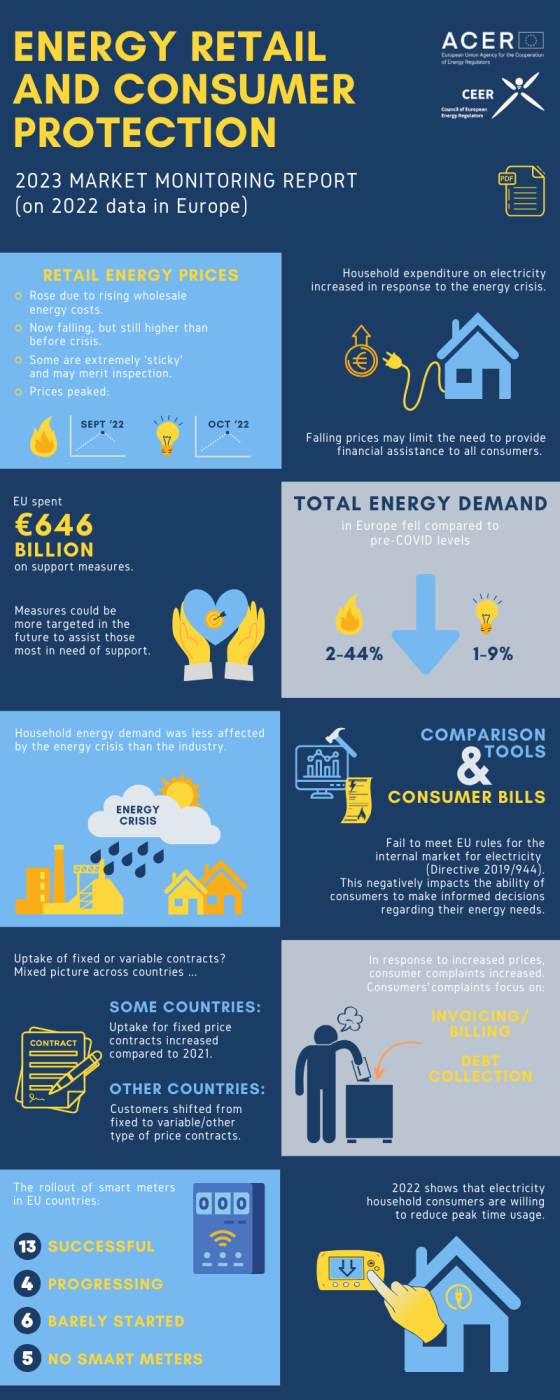ACER’s data dashboard provides insights into EU household energy price trends

ACER’s data dashboard provides insights into EU household energy price trends
What is it about?
ACER has updated its data dashboard, which tracks monthly changes in household energy prices across EU Member States and Norway from January 2019 to December 2024.
The dashboard provides valuable insights for policymakers, consumer protection groups, and EU citizens by highlighting trends in end-user electricity and gas prices, supporting informed decisions on energy affordability and system costs.
What are the key findings?
Electricity prices: In 2024, household electricity prices decreased by 5% compared to 2023. This was mainly due to a 17% fall in the energy component of prices. However, this decline was partially offset by higher network costs and the phasing out of certain subsidies. In Q4, prices and their composition remained steady, showing no significant changes compared to the previous quarter.
Gas prices: Similarly, household gas prices fell by an average of 7% in 2024, driven by the 20% drop in the energy component. Removal of subsidies contributed to a rise in the tax component, partially offsetting the decrease. In the last quarter, the average end-user gas prices slightly increased.
What lies ahead?
The drop in energy costs reflects the impact of Europe's growing use of renewable energy. However, as renewable energy generation expands, there will be a need for substantial investment in energy infrastructure, which could lead to higher network costs in the future.
The European Commission’s upcoming Action Plan on Energy Affordability will be key in addressing these challenges. The current trends highlight the importance of looking at the overall costs of the energy system (including network and infrastructure expenses), rather than focusing solely on commodity costs.
ACER will continue updating the dashboard quarterly to monitor the developments in energy affordability for European consumers.



